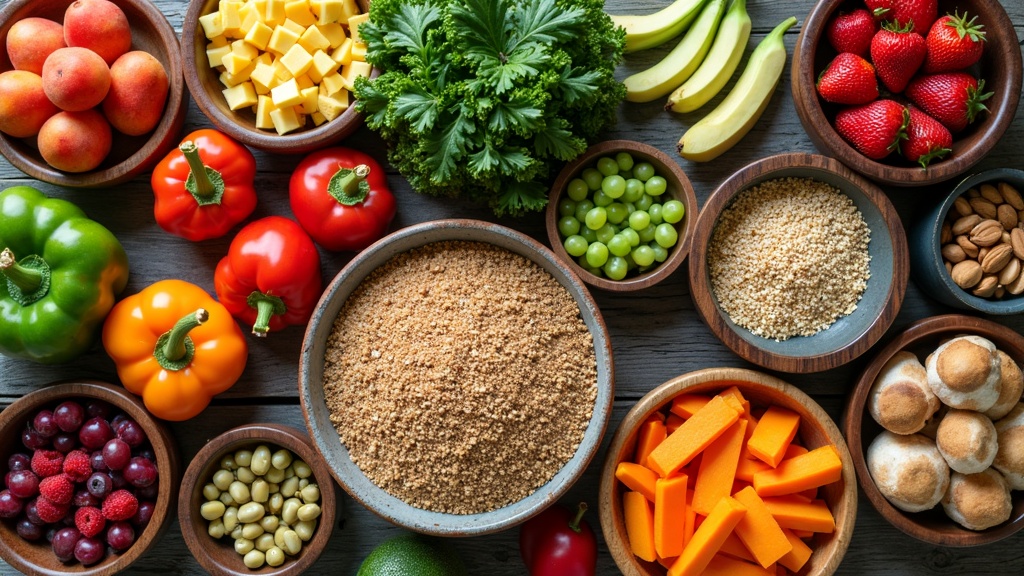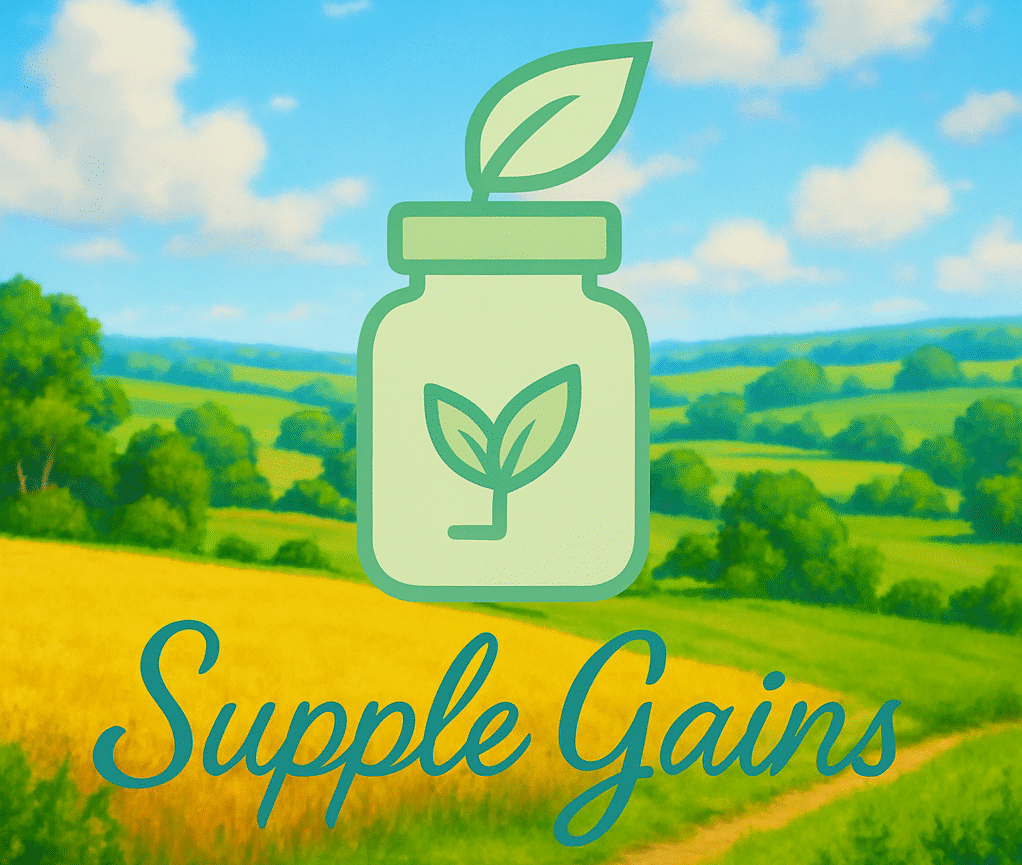Switching up what’s on your plate and moving toward a plantbased diet can seem like a huge change, especially if you’re coming from a diet that’s heavy on meat, dairy, or processed foods.
Feeling unsure or overwhelmed is totally normal. I’ve been there, too.
The good news is, taking small, thoughtful steps helps the process feel smooth and way more manageable.
If you’re curious or ready to make this switch, I’ll share my practical tips for moving to a plantbased diet without all the stress and hassle.

Understanding What a PlantBased Diet Means
Plantbased eating has become a hot topic, but what does it actually mean? Simply put, a plantbased diet focuses on whole, minimally processed foods from plants.
That means vegetables, fruits, whole grains, beans, nuts, seeds, and healthy oils make up most of your meals.
Some people go full vegan and skip all animal products, while others still include small amounts of meat, dairy, or eggs.
There’s a wide spectrum, and where you land is up to you and your goals.
If you haven’t tried eating this way before, it’s easy to feel lost in the sea of new ingredients and recipes.
Making changes gradually, instead of all at once, often works best and helps your habits actually stick.
Why Switching to a PlantBased Diet Can Be Worth It
Eating more plant foods comes with a bunch of perks.
Research shows that plantbased diets can support heart health, lower cholesterol, and help manage a healthy weight (source).
You’ll also be loading up on fiber, vitamins, and antioxidants that help keep your body running smoothly.
Plus, it’s a way of eating that’s friendly to the environment.
I noticed I felt less sluggish and more energized once I started adding more plants to my meals.
Meals were also way more colorful and satisfying than I expected.
Besides that, shopping for produce became more exciting as I found fresh, seasonal fruits and veggies—each trip to the store turned into a mini adventure to track down new flavors.
Getting Started: Small Steps to Kick Off PlantBased Eating
You don’t need to go from steak to salad overnight. Here are some ways I made the switch feel less overwhelming:
- Start with familiar meals and swap ingredients: Think spaghetti with meat sauce. Just use lentils, mushrooms, or a plantbased ground instead of beef.
- Add, don’t subtract: Instead of focusing on what you’re cutting out, look for tasty new additions, like roasted chickpeas or fresh mango salsa.
- Try “Meatless Monday” or another set meal: Dedicate one or two days a week to eating plantbased. It’s a solid first step and helps build confidence.
- Look for plantbased versions of comfort foods: There are awesome recipes and storebought swaps for favorites like burgers, tacos, and macandcheese.
With this approach, you’re slowly expanding your planteating game instead of totally flipping your routine all at once.
If the idea of meal planning feels daunting, I started out by jotting down three easy plantbased dinners for the week—this simple method helps take the guesswork out of “what’s for dinner?”
Key Tips for a Smooth Transition
Building a new habit takes patience, but some smart strategies can help the whole process feel easier:
- Plan simple meals ahead of time: At the start, stick to meals you know you’ll enjoy. Try a big veggie stirfry, a chickpea salad sandwich, or oatmeal topped with fruit and nuts.
- Stock up your kitchen: Fill your pantry and fridge with beans, grains, fresh and frozen veggies, nut butters, and spices you actually like. It’s easier to stick to new habits when the basics are on hand.
- Batch cook and prep in advance: Making a big pot of soup or roasting a tray of veggies means you’re never stuck without an option.
- Remind yourself why you’re making this change: Maybe it’s health, maybe it’s animal welfare, maybe it’s just curiosity. Write down your reasons and keep them in view.
- Stay open to trial and error: Not every recipe or food will be a new favorite, and that’s totally fine. I tried out dozens of recipes in the first few months; some flopped, but the hits became regulars on my menu.
What To Expect: Common Challenges and How to Tackle Them
Bumps in the road are totally normal when starting something new. Here are a few challenges you might run into (and some easy ways to deal):
- Cravings for old favorites: Sometimes you’ll really miss cheese or salty snacks. I found that trying different plantbased cheeses or making popcorn with nutritional yeast helped curb cravings. Keeping fun flavors and textures in my meals made a big difference, too.
- Social situations: Sometimes eating out, traveling, or hanging with family and friends can get tricky. I always check menus ahead, bring plantbased dishes to share, or eat a filling snack before heading out.
- Food fatigue: It’s normal to get bored if you’re eating the same things every day. Switching up spices and cuisines, like trying curry one night and a big grain salad the next, keeps things interesting.
- Worrying about protein: There’s lots of protein in beans, lentils, tofu, tempeh, nuts, and seeds. I keep some canned beans or packs of tofu handy to add to salads, wraps, or pasta for an easy protein boost.
Dealing with these challenges can actually boost your kitchen confidence.
Learn to embrace mistakes as opportunities to find new favorites, and don’t hesitate to share both wins and fails with fellow plantbased friends or online groups for moral support.
Managing Social Pressures and Conversations
One part that surprised me was how many questions I got from friends, family, and even strangers about “why go plantbased?” or “where do you get your protein?”
Keeping things simple and friendly made it easier.
Sharing new recipes and even inviting folks to try a meal together helped mix it up in a positive direction.
I also realized most people are just curious and not judging; turning these moments into lighthearted chats rather than debates made social gatherings way smoother.
Easy PlantBased Staples for Beginners
It’s really helpful to have some goto foods when you’re still building new habits. Here’s what I keep stocked so meals never get boring, and I can whip something up on busy days:
- Oats, brown rice, and quinoa
- Canned beans and lentils
- Frozen mixed veggies and berries
- Fresh greens, tomatoes, avocados
- Nuts, seeds, and nut butters
- Herbs and spices (like basil, smoked paprika, garlic powder)
- Plantbased milks (like oat, soy, or almond milk)
These basics make it simple to throw together quick bowls, salads, stirfries, or smoothies. Stocking up on a few sauces or condiments—like tahini or salsa—can also crank up basic meals without much extra effort.
Making PlantBased Eating Fun and Sustainable
Enjoying your food is really important! The more you look forward to your meals, the more likely the habit sticks. Here are a few ways I keep plantbased meals fun:
- Try new recipes regularly, even just once a week
- Explore international cuisines, like Thai, Mediterranean, or Ethiopian, that feature tons of tasty plantbased dishes
- Use colorful veggies and fresh herbs to add crunch and flavor
- Eat with friends and make meals a social event
I’ve even started following a few plantbased blogs and YouTube channels, which are pretty handy for ideas and inspiration
. Watching others bring to life beautiful, plantfilled plates always fires me up to get into the kitchen and try something new.
You might also consider joining a local meet up or cooking class for added motivation and fun.
Frequently Asked Questions About Going PlantBased
Lots of questions come up as you switch to eating more plants. Here’s what I get asked the most:
Q: How do I make sure I’m getting all the nutrients I need?
A: Eating a wide variety of foods—especially dark leafy greens, whole grains, beans, nuts, and seeds—usually covers your bases.
Vitamin B12 is something you’ll want to look into, since most plant foods don’t have it.
so a supplement is worth considering.
Reliable details are easy to find at trusted nutrition sites like EatRight.org.
Q: Is eating plantbased expensive?
A: It can be, but it doesn’t have to be. Staples like beans, grains, and veggies are some of the cheapest foods around, especially if you buy in bulk or frozen.
Prepackaged and specialty items like vegan cheeses or meat alternatives are pricier, but you don’t need them for tasty plantbased meals.
Q: Can I eat out and still follow a plantbased diet?
A: Definitely. Lots of restaurants now offer plantbased options. I always scan menus ahead or ask if a dish can be made meatless; most kitchens are willing to help.
Sending a quick message beforehand saves awkward moments at the table.
Q: Will I need to take supplements?
A: The main supplement to consider is vitamin B12. Omega3s from algae oil and vitamin D might also help, especially if you’re fully plantbased.
Always talk to a healthcare pro if you’re unsure about your unique needs.
When PlantBased Might Not Be for Everyone
Most people find at least some level of plantbased eating doable, but anyone with allergies, health conditions, or high nutrient needs should talk to a healthcare provider before making big changes.
Kids, athletes, and pregnant or breastfeeding folks need special attention to make sure all nutrients are covered.
Also, if you have a restrictive food budget or limited grocery access, you may need an extra game plan for affordable, accessible ingredients.
Wrapping Up
Moving toward a plantbased diet doesn’t have to mean a total lifestyle overhaul.
Taking small steps, experimenting with easy swaps, and keeping lots of tasty options on hand makes the switch way less stressful.
Each new meal is an opportunity to learn and stumble upon flavors you like while getting a little closer to your goals.
No matter your starting point, every plantfilled meal counts and keeps you moving forward.
Remember, you’re in control of how quickly you want to roll out these changes;
what matters most is making choices that work for you and help keep the experience light, fun, and positive.
